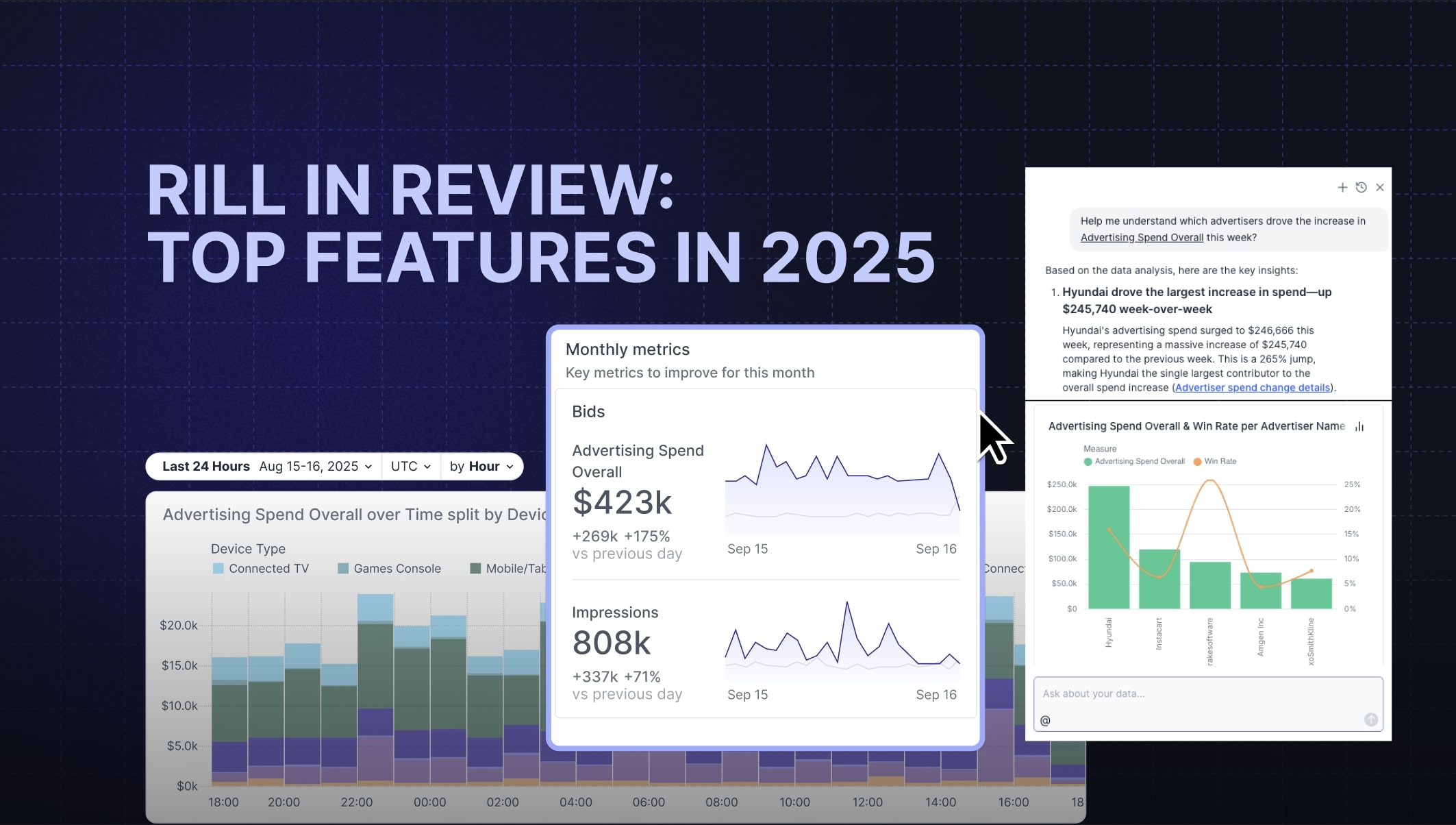
Introducing the new File Explorer



We’re excited to showcase the new File Explorer in Rill Developer that is now available as part of our most recent v0.44 release. These changes are the first step of a broader rework of the Rill Developer frontend, as we look to reimagine and significantly improve the developer experience (working towards Rill Developer 2.0)! With the File Explorer, developers now have the ability to interface with their entire Rill project natively and restructure the project, including assets and nested folders, to better align with the needs of their use cases or organization.
Some examples that you might see out in the wild:
- Organizing sources, models, and dashboards within their respective folders by teams or use cases (e.g. nested folders for each resource type)
- Organizing all assets (inclusive of sources, models, and dashboards) within the same folder, e.g. creating a Finance folder that contains all sources, models, and dashboards for your Finance use cases, having a separate folder for Marketing, etc.
- Mix & match as needed - perhaps I have a set of core central sources and models that are relevant for all use cases and then dedicated folders for final output models and dashboards
- Nested subfolders (e.g. folders within folders within folders)
%2520copy.jpeg)
The possibilities are endless! Please check out the above Loom for a quick walkthrough. We’ve also included a Q&A below with Alex Thor, our lead PM, to dig a little more into the File Explorer and the rationale behind this change. We look forward to hearing from the community!
Q&A
1. First and foremost, what’s this new file explorer about and what can I expect from it? What are the biggest changes or features you’d like to highlight and how does it work?
Alex: As both Rill grows and your project grows, we wanted to introduce a better way of navigating your project to support both product and project growth.
Product Growth - As we continue to add more and more resource types into Rill to support net new functionality, it started becoming painfully obvious that there would be a problem with having fixed sections for certain asset types. Rather than confining ourselves into a fixed listing of files, we wanted to display the full project listing in a more traditional file and folder explorer view. This also allows us to continue building upon Rill in an interesting direction.
Project Growth - What we’ve discovered with many of our power users and most engaged or actively growing customers is project scalability starts becoming a key point of consideration. As projects continued to scale linearly in size, with more sources, more models, and more dashboards, project complexity could grow exponentially. Therefore, we wanted to enable authors to define their own organized structure and hierarchy of files and folders.
As for how the new File Explorer works, well.. if you’ve used a code editor before (think VSCode), you’ll find yourself at home within the new Rill Developer interface. It allows developers to navigate and organize content without being constrained into a pre-defined structure imposed by Rill. Our end goal here is flexibility and to empower the local development experience while preserving the interactivity and ease-of-use of Rill.
2. But what’s the motivation behind making this change now?
Alex: We decided to make this change now to better enable our users to easily organize content that fits into their own workflows. Want to organize by data source? Well, now you can! We’ve also observed some interesting paradigms and creative solutions to work around these limitations in the past. No longer do developers have to prefix source, models, and dashboard names with qualifiers (such as “1_” / “2_” / “3_” or “A_”, “B_”, C_”) to preserve a certain order that ultimately confuses your end users. The new file explorer introduces a layer of organization within your deployment that scales better with development.
3. What should our end users and customers expect that’s different from the old Rill Developer user experience? Will we allow users to switch between the “old” and “new” Rill Developer?
Alex: If you have used Rill Developer in the past, you should recognize the new interface as your existing file structure will seamless transition over. We wanted to make the process as painless and smooth as possible so there should be no major noticeable hiccups!
As for switching back to the “old” Rill Developer, we felt that there was an opportunity to pull the trigger and start aligning the local development experience with the future direction of the product. While we recognize that this might prove to be a larger change for some, making the change now allows us long term to move with more velocity and enable net new features (and experiences) that we believe will further empower developers with their journey using Rill. Please let us know what you think though and we’re always happy to assist!
4. Where are these changes leading to? Get us excited - what’s next on the docket?
Alex: As we continue introducing new resources and capabilities, you can expect to see new editing possibilities, new previews (within the frontend), and even easier managing of resources! While we have intentionally taken steps to make organization of files and objects easier for developer, in terms of what’s next, we are starting to shift our focus to how we can also organize content more easily in Rill Cloud for end users. Stay tuned!
5. Any parting thoughts that you’d like to share with the community?
Alex: First of all - thank you for all the support and we love to see how the community has grown over the past year! Please rest assured that we want to stay true to our roots. While we still maintain a metrics-first philosophy and maintain an opinionated approach to how dashboards should be designed (and consumed) at Rill, we also strongly believe that how a project is organized should ultimately be left as an end decision for developers to make. If you haven't already, please connect with us in our Discord channel to share your feedback.


Ready for faster dashboards?
Try for free today.


.svg)
.jpg)
.png)